-
This post is also available in: Italian, Spanish
The royal palace of Caserta
- View from the park
- The Grand Waterfall at night
- Diana and Actaeon fountain
- Caroline Aqueduct
- Honour Grand Staircase
- The throne room
- King’s library
- King’s bedroom
The Royal Palace of Caserta (in Italian: Reggia di Caserta) is a former royal residence, in Caserta, 6 km from the Ancient Capua. It was erected for the Bourbon kings of Naples. It was the largest palace and one of the largest buildings erected in Europe during the 18th century.
In 1997, the Palace was designated a UNESCO World Heritage Site, described in its nomination as “the swan song of the spectacular art of the Baroque, from which it adopted all the features needed to create the illusions of multidirectional space”.
The construction of the palace was begun in 1752 for Charles VII of Naples, who worked closely with the architect Luigi Vanvitelli. The political and social model for Vanvitelli’s palace was Versailles. The king’s primary object was to have a magnificent new royal court and administrative center for the Kingdom in a location protected from sea attack.
The palace has some 1,200 rooms, including two dozen state apartments, a large library, and a theatre modelled after the San Carlo theather of Naples. It has more than 40 monumental rooms completely decorated with frescoes (for example, Versailles only counts 22 monumental rooms with frescoes).
The park starts from the back façade of the palace, flanking a long alley with artificial fountains and cascades. A large aqueduct (the Caroline aqueduct) was constructed to bring water for the prodigious water displays.
The Caserta Palace has been used as a filming production in a number of movie productions:
- It was used in the 1999 film “Star Wars Episode I: The Phantom Menace” as Queen Amidala’s Royal Palace on Naboo. It appeared again in the 2002 film “Star Wars Episode II: Attack of the Clones” as Queen Jamilla’s palace.
- The same room was also used in “Mission: Impossible III” as Vatican City.
- The main staircase is used in “Angels & Demons” as the Vatican’s staircase.






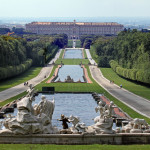
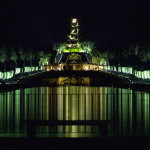
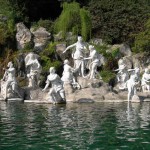

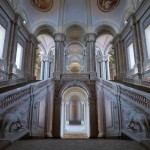
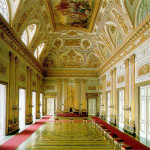
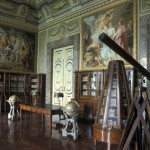
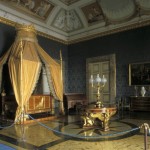
 English
English Español
Español Français
Français Italiano
Italiano